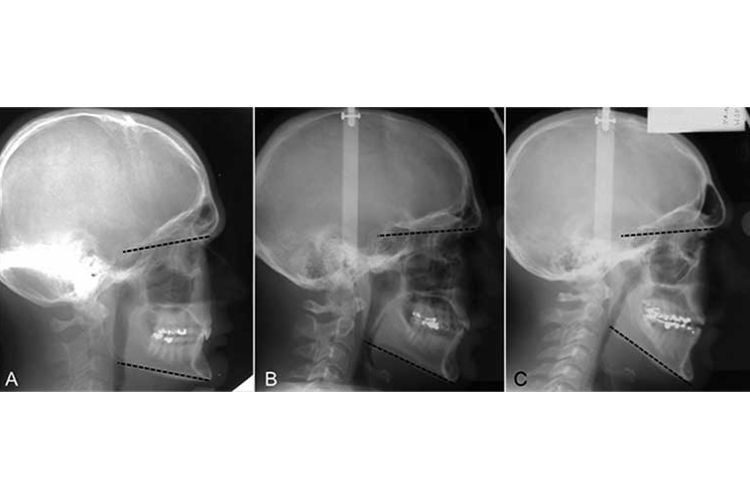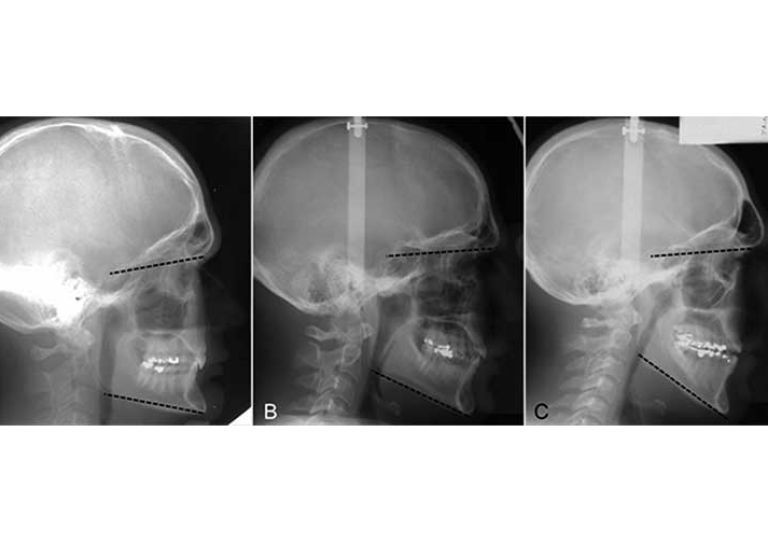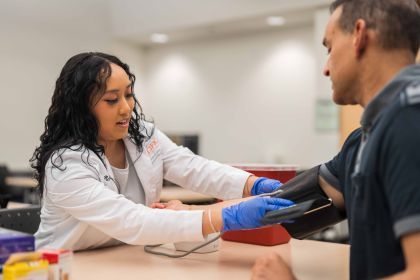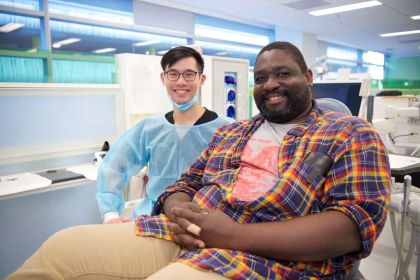Breadcrumb
Predicting adult facial type from mandibular landmark data at young ages
What is it?
A study of a large set of longitudinal lateral cephalometric radiographs of the head and facial area, comprising 941 participants ages 6 to 21.
What problem does it aim to solve?
An important part of making treatment plans for patients is being able to predict how they will physically grow and change over time — particularly around the mouth and jaw area.
How does it work?
The radiograph images were measured to gather "landmark coordinates". These coordinate measurements were then corrected and recorded in a database to be analyzed. Researchers categorized them into three primary facial types: hypodivergent, hyperdivergent and normodivergent. They also looked for differences by age group and between males and females.
What are the real-world implications?
Three landmarks turned out to be the most useful: menton, gonion and articulare. "Overall, the results from this analysis suggests that adult facial type can be determined reasonably well from mandibular shape at younger ages with increasing accuracy as individuals get older." If craniofacial growth can be accurately predicted, this information will help clinicians make better treatment plans for their patients.
What are the next steps?
“Future studies include exploring ontogenetic trajectories of mandibular shape within each facial type for making growth predictions and evaluating changes in facial type within subjects over time.”

Lateral cephalograms demonstrating examples of hypo‐divergent (A), normo‐divergent (B) and hyper‐divergent (C) facial types.
Source
“Predicting adult facial type from mandibular landmark data at young ages”, Orthodontics & Craniofacial Research, Volume 22, Issue S1, Special Issue: Proceedings of the 2018 COAST Innovators' Workshop on “Personalized and Precision Orthodontic Therapy”, May 2019, Pages 154-162
Authors
Heesoo Oh, Craniofacial Research Instrumentation Lab, Department of Orthodontics, University of the Pacific, Arthur A. Dugoni School of Dentistry
Ryan Knigge, Department of Pathology and Anatomical Sciences and Department of Orthopaedic Surgery in the Missouri Orthopaedic Institute, University of Missouri
Anna Hardin, Department of Pathology and Anatomical Sciences, University of Missouri
Richard Sherwood, Department of Pathology and Anatomical Sciences and Department of Orthopaedic Surgery in the Missouri Orthopaedic Institute, University of Missouri
Dana Duren, Department of Pathology and Anatomical Sciences and Department of Orthopaedic Surgery in the Missouri Orthopaedic Institute, University of Missouri
Manish Valiathan, Department of Orthodontics, School of Dental Medicine, Case Western Reserve University, Cleveland, Ohio
Emily Leary, Department of Orthopaedic Surgery in the Missouri Orthopaedic Institute, University of Missouri
Kieran McNulty, Evolutionary Anthropology Lab, Department of Anthropology, University of Minnesota, Minneapolis, Minnesota






